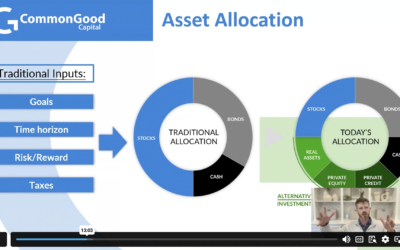Presidential candidate and former Vice President, Joe Biden, recently released announced a tax plan to, among other things 1) remove the preferential tax rate on long-term capital gains (“LTCG”) for taxpayers earning more than $1 million annually, 2) revert the top individual income tax rate to the pre-Tax Cuts and Jobs Act level of 39.6 percent, and 3) eliminate the “loop hole” that allows decedents to pass unrealized gains to heirs without tax. Each of these measures indirectly effects an investor with capital gains who is considering an investment in an Opportunity Zone (“OZ”). We’ll explore the first two parts of the proposal below and the third we’ll cover in next month’s newsletter, along with any proposed changes to the OZ legislation by the Biden campaign and lawmakers.
As a reminder, LTCGs have historically been taxed at a preferential rate of 20 percent for the highest earners. This proposal would tax the LTCG and qualified dividends of taxpayers earning more than $1 million annually at the ordinary income rate, as high as 39.6 percent. The most significant benefit of a Qualified Opportunity Fund (“QOF”) investment is the elimination of any capital gain taxes on the QOF interest after a 10-year hold. If Biden’s proposal to increase the tax rate on LTCG is implemented, this elimination becomes far more meaningful, relative to both current tax rates and to a comparable investment outside of an OZ.
Those familiar with OZ regulations will know that another important potential benefit is the ability to step-up the basis by 10% and defer the recognition of a capital gain rolled into a QOF until the 2026 tax year. This deferral has the potential to drive significant incremental after-tax returns, by enabling the investment of the portion of capital that would’ve otherwise been paid as tax in the current year. An astute investor would correctly point out that the proposed increase in the LTCG tax rate would deteriorate much of the value of this deferral. The reduction in this benefit, however, should be overcome by the now more valuable exclusion at the end of ten years, assuming the QOF investment appreciates. Additionally, it’s very important to remember that with proper tax planning an investor can potentially offset the LTCG deferred to 2026 with capital losses from another asset in 2026 or one carried forward from prior years.
In our opinion, Biden’s proposed increase in the LTCG tax rate does not make QOFs a less attractive investment structure, but rather a) shifts some of the potential benefit from the deferral and step-up to the elimination of capital gains, b) provides additional incentive for choosing an asset with strong underlying fundamentals and growth potential, and c) increases the importance of a thoughtful tax planning strategy.





